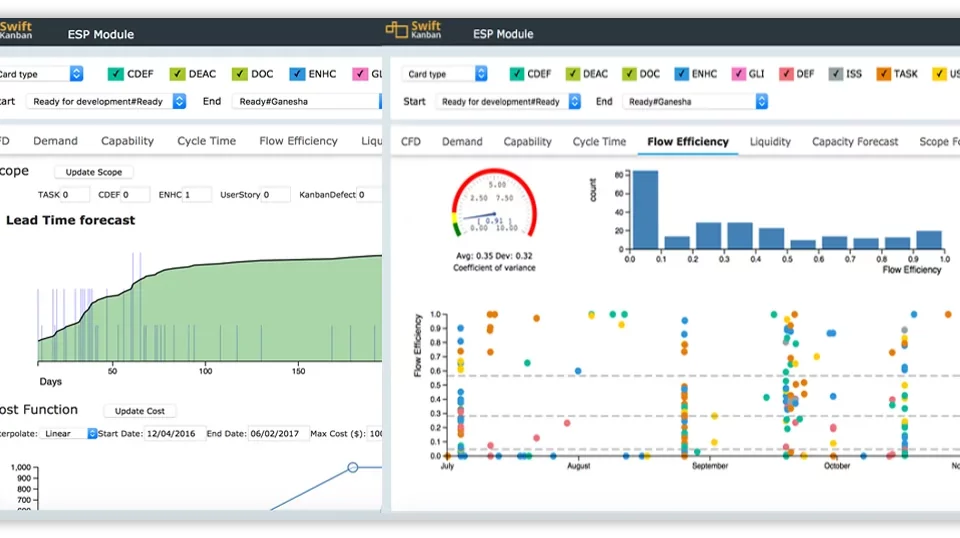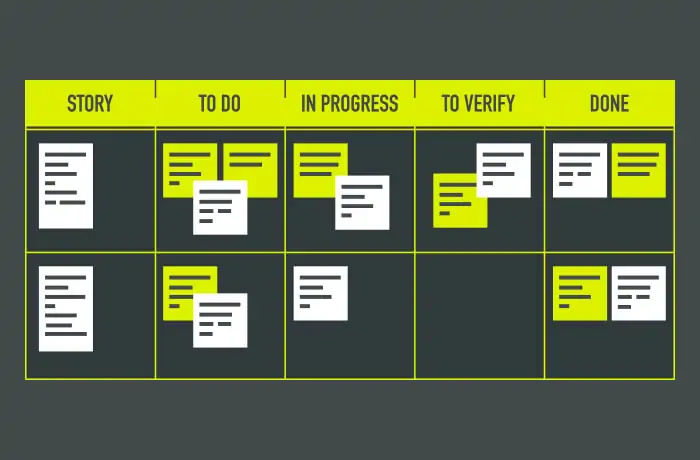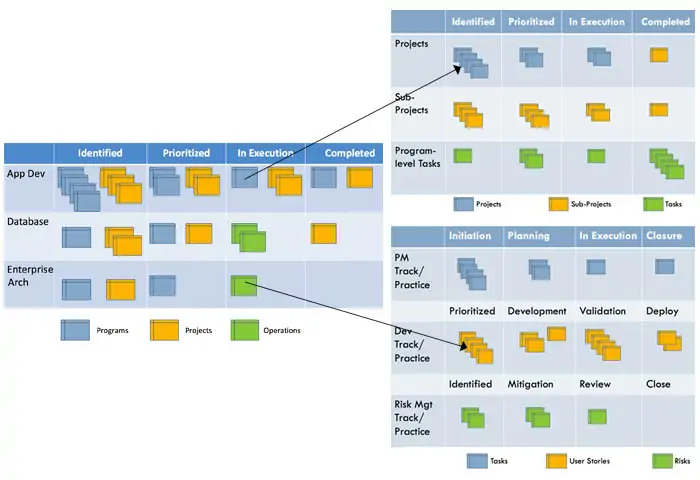- Filter by
- Categories
- Tags
- Authors
- Show all
- All
- Agile
- Agile ALM
- Agile Marketing
- Agile Metrics
- Agile Tool
- AI
- ALM
- ALM Tools
- Application Lifecycle Management
- Application Portfolio Management
- Artificial Intelligence
- Blogs
- Bytes
- Capacity Planning
- Collaboration
- Essential SAFe
- Everyday Kanban
- Hybrid Agile
- Kanban
- Kanban board
- Kanban cycles
- Kanban for Distributed Teams
- Kanban Tool
- Leadership
- Lean
- Lean ALM
- Lean Software Development
- Lean SSC
- Lean/ Kanban
- Management
- Modern Management
- News and Events
- Newsletter
- Portfolio Kanban
- Portfolio Management
- PPM
- Process Maturity
- Product Updates
- Product Webinars
- Project Management
- Remote Working
- Requirements Management
- SAFe
- Scaled Agile ALM
- SwiftEnterprise
- SwiftEnterprise Updates
- Uncategorized
- Upcoming Webinars
- Visual Management
- Visualization
- Webinars
- WIP
- All
- Account Reporting
- agile
- Agile 101
- Agile ALM
- Agile Management
- Agile Marketing
- Agile Metrics
- Agile Tool
- AgileIndia2015
- Agility
- AI
- ALM
- ALM Tools
- Application Lifecycle Management
- august swiftkanban
- Be Nimble
- Benefits of ALM
- Best
- Books
- Brochures
- Burndown Chart
- Business Benefits of ALM
- Business Management
- Capacity Planning
- Card Color
- Case Studies
- Change Management
- Checklists
- class of service CoS
- cognitive thinking
- Collaboration
- Collaborative Product Management
- continuous improvement
- Customer Satisfaction
- Cycle Time Analysis
- Cycle time settings
- Cycles
- DAD
- Developer Productivity
- DevOps
- Discovery Kanban
- Effort Tracking
- Elimination of waste
- Employee Engagement
- Employee Productivity
- Enterprise Kanban
- enterprise se
- Enterprise Services Planning
- Esp
- Essential SAFe 4.0
- Fixed-Duration Projects
- Fixed-Price Projects
- flowefficiency
- Getting things done
- Global Delivery Model
- Granular Kanban
- GTD
- Humanizing Work
- Hybrid Agile
- Importance of WIP Limits
- Infographics
- innovation
- Issue management
- IT
- IT Ops
- Kanban
- Kanban 101
- kanban app
- Kanban board
- kanban cadences
- kanban cards
- Kanban cycles
- Kanban for Business Analysis
- Kanban for Distributed Teams
- Kanban Hierarchy
- Kanban in Marketing
- Kanban in Procurement
- Kanban Portfolio Management
- kanban to-do Board
- Kanban Tool
- Kanban tools
- kanban update
- Kanban/ Agile Webinars
- kanbanflow
- Kanbantraining
- Leadership
- Lean
- Lean ALM
- Lean Procurement
- Lean Software Development
- Lean SSC
- Lean/ Kanban
- Lean/agile framework
- leankanban
- Leankanbanuniversity
- Learning
- LeSS
- LSSC11
- Management
- marketing management
- Modern Management
- MUDA
- Objectives
- Paired Programming
- Personal Kanban
- PI Planning
- PKFLOW
- Planning & Tracking
- PM 101
- Portfolio Kanban
- Portfolio Management
- PPM
- Process
- Process Maturity
- processes
- Procurement
- Product Management
- Product Owner
- Product Webinars
- Program Increment
- Project Portfolio Management
- Project Team Productivity
- Quantification
- Release Management
- Release Train Engineer
- Replenishment Meeting
- Reporting
- Requirements Management
- RoI of ALM Tools
- Root cause analysis
- SAFe
- Scaled Agile
- Scaled Agile ALM
- Scaled Agile Framework
- Scaling Agile
- Scrum
- Scrumban
- Software
- Software Estimation
- SwiftESP
- SwiftKanban
- SwiftKanban iOS app
- swiftkanban july
- swiftkanban june
- swiftkanban mobile app
- SwiftKanban Update
- Systems Thinking
- Task Lists
- Team Kanban
- Teams
- To-Do Board swiftkanban
- To-Do Lists
- Toyota Kata
- upstream Kanban
- user story
- Visual Management
- Visual Project Management
- Visualization
- Webinars
- Whitepapers
- WIP
- WIP limit
- wip limits kanban
- Work Breakdown
- XP
- All
- Muhammad Raza
- Anadi Misra
- Andrea Fryrear
- Repaka Anjana Likitha
- Anitej Rao
- Ashwin Swarup
- Ashwini Lalit
- Anshuman Singh
- Bhaskar S
- Bhavesh Siddamsettiwar
- Raghunath Basavanahalli
- Bash Sarmiento
- Burkhard Berger
- Carlos Schults
- Christina Sookram
- Christophe Achouiantz
- David Anderson
- Dave White
- Elizabeth Harrin
- Florian Boldt
- Team Infosec
- Joaquin Aceron
- Jim Benson
- Julia Wester
- Karan Gadani
- Kshipra Bhat
- Linsa Saji
- Mahesh Singh
- Manikandan R
- Marjan Venema
- Masa K Maeda
- Mike Burrows
- Navin Anand
- NimbleWork PR
- Nishanth Mittu
- Niveditha Reddy
- Natalia Manha
- Priyank Parekh
- Ram Subramanian
- Rumyana Dancheva
- Roman Shvydun
- Rupal Kaushik
- Siddharth Dutta
- Simli Saha
- Subhajit Sengupta
- Sudipta Lahiri
- Sunita Vyas
- Team ESG
- Zach Watson
February 21, 2018
Published by Navin Anand on February 21, 2018
Categories
Transformation approach using the enterprise services view, balancing system demand with capability, planning and prioritization using a visual decision framework, using decision support analytics like probabilistic forecasting and cost of delay.
January 5, 2018
Published by Navin Anand on January 5, 2018
Categories
Why this critical visual data integration can fail, tooling and features that need to be built in for success.
December 19, 2017
Published by Navin Anand on December 19, 2017
Categories
What are the merits of a Kanban visual integration layer and the necessary capabilities to deliver on this integration.
August 20, 2017
Published by Navin Anand on August 20, 2017
Categories
Solving the Insulation Challenge of Managed Transformation
November 30, 2016
Published by Priyank Parekh on November 30, 2016
Categories
Enterprise/ Portfolio Kanban has for some time provided a visual method of defining and managing portfolios in a much easier manner compared to traditional PPM tools. Kanban Boards can be set up at different levels of the organization to track a portfolio of initiatives, programs, or product releases and their underlying projects or work items can be visualized and tracked far more easily than ever possible traditionally. (To learn more about SwiftKanban’s existing Portfolio Kanban capability, please click here.)
September 27, 2016
Published by Mahesh Singh on September 27, 2016
With the latest update to SwiftKanban, we have made some exciting progress in supporting Enterprise Services Planning, Upstream or Discovery Kanban – and Portfolio Management with Kanban. At the same time, we have tackled one of the most needed, and fairly tricky, feature of customizing the information one can see on Kanban cards in the Kanban Board view.
October 25, 2013
Published by Mahesh Singh on October 25, 2013
There is a lot of attention given to Lean/ Agile product development teams around the work done and the (Lean/ Agile) processes adopted in by the Dev team once a set of features (backlog items) have been identified for a set of sprints (scrums) and/ or Releases.






